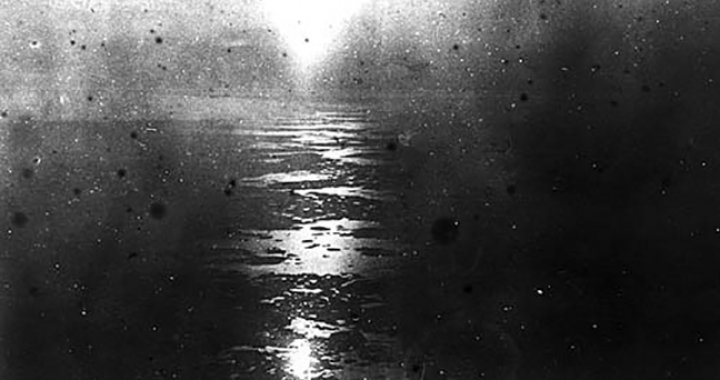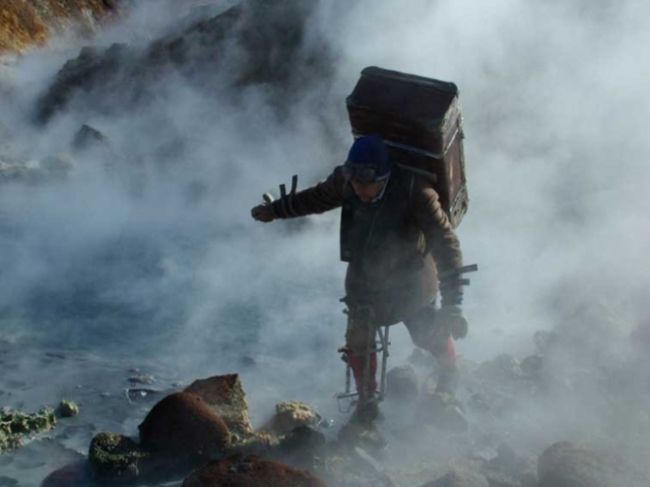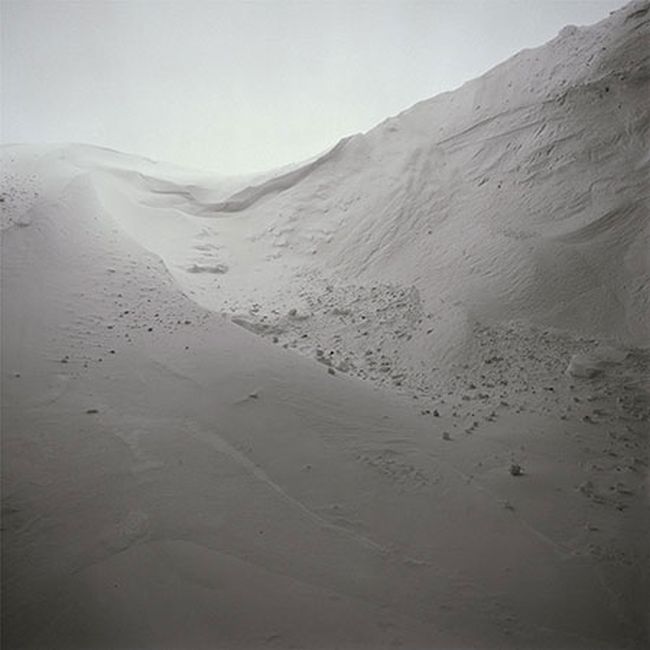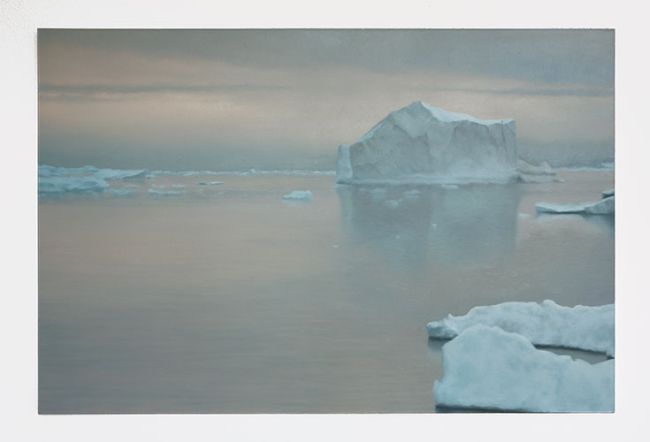
ARCTIC - dream and reality
Anne Neimann Clement
06/11/2013
ARCTIC
Louisiana - Museum of Contemporary Art
Humlebæk, Denmark
September 26, 2013 - February 2, 2014
As most kids, the Arctic was a concept of fascination and imagination to me. The idea of the North, and stories about dangerous expeditions, deep glaciers, cute polar bears, and marvellous Northern light, was - and still is attractive, mysterious, and appealing. The Arctic is a place you dream about, long for, and love, even though you've never been there.
As a grown up, the concept of the Arctic gets more complicated. The Arctic has become the symbol of a global power struggle. Since the Cold War, the Arctic has been a key point, and today, the Arctic still embodies the question of rights – the right to the oil the Northern Sea, the right to territory, the right to military power. Last, but not least, the Arctic is a place for environmental struggles, as the melting poles bear witness of climate changes and global heating.
It is exactly within this context that the exhibition ARCTIC takes place. Between the real and the imagined, the powerful and the fragile, the frightening and the fascinating North. Louisiana’s major, multi-faceted autumn exhibition ARCTIC is a story about dreams, destiny, adventure and beauty. It is a tale of fear, desire, downfall, and survival. A location that, through the centuries, has attracted artists, scientists, writers and adventurers alike.
The exhibition consists of scientific artefacts, historical objects, tales, photos, paintings, sounds, installations, videos, drawings, a film clip from the first Superman movie from 1973, and a stuffed polar bear.
The span of the exhibition is broader than that of the current political, economic, scientific and ecological interest in the frozen top of the world. “ARCTIC is one of our major fundamental cultural narratives,” says Louisiana Director Poul Erik Tøjner.
“It is a story about how our culture expands and develops through images – images in which the unknown is reflected in the known and in which we celebrate the boundaries of our existence.”
Five legendary tales frame the exhibition
Five legendary tales, each one a great chapter in the epic of conquest, frame the exhibition.
We begin with the gloomy and grotesque story of Sir John Franklin (UK, 1786-1847), who failed nobly in his search for the Northwest Passage, which would have offered a route to China over the top of the globe. Trying to expand Victorian civilization to the North – by bringing along knives and forks of silver, not to mention an old organ – both men and mice disappeared without a trace. End of story.
Next we are reminded of the Norwegian hero Fridtjof Nansen (NO, 1861-1930), who's strategy to get to the Pole was brilliant. He assumed that the ice had to drift from east to west across the North Pole, so he let his ship, Fram, become icebound and drift with the ice. Nansen got closer to the North Pole than anyone had before him, and even though he didn't make it all the way, he returned as a hero.

Landing of Salomon August Andrée and Knut Frænkel
ARCTIC also shows a series of photographs from the fatal balloon voyage of Captain Salomon August Andrée (SE, 1854-1897). Andrée took off from Svalbard in a balloon, along with his companions Strindberg and the newly married Fraenkel, but the balloon got wet and the water froze, and the balloon – too heavy to float – crashed. 30 years later, the three corpses were found, along with equipment that included five rolls of film containing a total of 93 images, which are now being shown, in their entirety, for the first time in the Louisiana exhibition. In black and white, the photographs provide evidence on how everything went so wrong, evoking horror and awe for the wild nature of the North.
Another absurd, yet lighter part of the exhibition is the story about the ridiculous race for the Pole between the Americans Frederick Cook (1865-1940) and Robert Peary (1856-1920), which is told through a selection of pictures, articles, and cartoon drawings from American and European newspapers. Even though it was supposedly all about getting there first, what was even more important was publicity; to win the credibility of the press and, by that, the favour of the people.
Finally, ARCTIC reveals objects and photos collected by the adored son of the Arctic, the Danish sledge traveller, Knud Rasmussen (1879-1933). Rasmussen's seven Thule exhibitions were not so much about making it to a certain point as they were about exploring the land and its people. Rasmussen brought home songs, legends, and knowledge about the culture and traditions of Greenland. Most importantly, Rasmussen provided the people back home with beloved stories about travelling, which have turned into bestsellers worldwide.
The highlights of the exhibition, though, are the video and sound installations that interpret and compliment what we already know (or think we know) about the Arctic.
Everything is going to be Alright
Filmed in 2007, on location in the Gulf of Bothnia, just south of the Arctic Circle, Guido van der Werve's (D) video work "Nummer Acht, Everything is going to be alright" shows the artist striding ahead of a giant icebreaker.

Still from Guido van der Werve's video work
Lately, the work has been at display at the Museum of Modern Art (MoMA) in New York City, and it's one of the most stunning works in the Louisiana exhibition. As you watch the walking man in the endless white landscape, time dissolves and distance doesn't exist. In this grandiose and self-sacrificing action, the artists insinuate just how stupid, pathetic – but yet great – is man's attempt to claim the Poles as rightfully his. Like a 21st century version of Caspar David Friedrich’s intrepid 19th-century explorers in the painting The Sea of Ice, the video balances the silence and the storm, the strong and the fragile, and the drama and the tranquility, while perfectly hypnotising the viewer.
Guido van der Werve tells about Arctic
The Artist on a Conquest
Just as van der Werve, the artist John Bock (GE) also uses himself as the protagonist in his video work Skipholt (2005). Carrying useless and unhandy luggage, Bock strives through a rough and rocky landscape with no obvious aim.
Bock is his own worst enemy and possessed with ‘white fever’ as he goes on a mission: impossible. Full of hope, but without direction or awareness of the dangers of nature, our simple-minded hero stumbles on and on, as a mocking regard to the noble and respected men of the past who conquered the North, or died in the attempt.

Still from John Bock's video work Skipholt (2005)
When watching the video, we laugh at the artist's silly and unprepared actions, while Bock himself makes fun of the fascination with the Arctic and the imperialistic power struggles the region has caused. This who-makes-fun-of-who-? layer makes us rethink and question our ideas about the attractive North.

Darren Almond. Arctic Plates 6, 2003
In the video work "Arctic Pull", by Darren Almond (born 1971, UK), we find another exposed traveller battling the cold and gloom of the black Siberian night. In the video, we see Almond striding through an impassable blizzard while pulling a sledge – on which the camera is bound – across the Arctic permafrost during the dead of night.
Obsessed with geographical and physical limits, Darren Almond presents extreme situations to his observers. His diverse work – which incorporates film, installation, sculpture and photography – deals with evocative meditations on time and duration, as well as with the themes of personal and historical memory. Almond is interested in the notions of geographical limits and the means of getting there. Many of Almond’s works are filmed in wide-ranging – and often inaccessible – geographical locations, such as Siberia, the holy mountains in China, or the source of the Nile.
His video work in Louisiana has been installed in a small black room with no windows, lighted only by the faint green glow emanating from the camera's night vision. Entering the room feels like entering a horror movie. The darkness surrounds you and a loud and disturbing sound overwhelms you. The field-recordings of the Arctic wind are terrifying, and the hardships the artist goes through seem simply unbearable.
The work poetically recalls the harrowing journeys of Arctic explorers in the 19th and 20th centuries; it also suggests, in a broader sense, the historical trope of humanity's epic struggle to conquer the world's unknown territories.
Darren Almond talks about the Arctic
Walking on Thin Ice
In popular imagination, the Arctic usually consists of visuals of white landscapes, but one of the most compelling elements in this exhibition is a dark room dedicated to the Arctic soundscape. The Danish artist Jacob Kirkegaard's sound installation, "Isfald" (Icefall), takes you all the way to the North Pole by allowing you to create your own images of the Arctic.
Kirkegaard has been recording sounds around him since the age of six, when he was given a reel-to-reel tape recorder and a microphone. At nineteen, he was introduced to Walter Ruttmann’s Wochenende, an image-less film of sound from 1930, which, together with the experimental sound compositions of composer Pierre Schaeffer, laid the foundation for his artistic practice. Today, Kirkegaard experiments with sophisticated recording tools – like accelerometers, hydrophones, and homemade electromagnetic receivers – to capture the wondrous dimensions of the world around him, or, the sounds that emanate from the inner ear.

Popping ice chunks and calving glaciers at the Ilulissat Ice Fjord. Jacob Kirkegaard recording for "Isfald"
After having received the invitation from Louisiana in June of 2013, Kirkegaard went to Greenland with his camera and recording equipment. The ice sounds used in this work were either recorded with underwater microphones that were placed 20 meters under the Ilulissat Ice fjord, or with vibration sensors that were placed near the melting glaciers of Kangerlussuaq.
In the installation at Louisiana, the underwater recordings have been installed in 14 speakers under the black floor. These creaking, babbling, pounding, and high-frequency sounds are complimented by the dramatically deep and scratching sounds of ice sheets falling into the sea, which have been installed in the four corners of the room.
"Isfald" is located in a rectangular and high-ceilinged room that has been covered with grey textile and is lit by a silvery and gloomy light. The installation invites you to walk around – or lay down – on the speakers, which makes you feel like you're walking on thin ice. The sound is interesting, full of activity and tension that changes gently between being either weak or violent.
Kirkegaard plays with our fears of the unknown, and challenges our imagination in an abstract art work that leaves a very tangible, physical, and even sensual, impression. The experience offers a new and aural dimension to our conception of the Arctic. Standing there in the dark and listening to otherworldly sounds might be the closest we ever get to traveling to the Pole ourselves.
Like a Rothko painting – beautiful, abstract, multi-coloured and with many layers – "Isfald" deals with imagination and contemplation, and not so much with CO2 levels, international politics and climate change, even though our prior knowledge about the melting Poles does, to a great extent, frame our experience.
Jacob Kirkegaard talks about the Arctic
An exhibition that has it all
ARCTIC presents works by artists such as Gerhard Richter, Sigmar Polke, Sophie Calle, Wolfgang Tillmans, Wilson Bentley, Evgenia Arbugaeva and Per Kirkeby. The significant number of artworks blend well with the cultural and historical material and the scientific objects – such as early photographs of snow crystals, observations of ice cores, maps, clothing and tools from the original Inuit culture, and tales – like the story of the world’s most famous iceberg, the one that made the Titanic a legend.
But why do cultural and historical artifacts belong in a museum of contemporary art? Louisiana Director, Poul Erik Tøjner, explains:
"They belong in a museum like Louisiana mainly because of our belief that by reflecting art and cultural history within each other, we can reveal various aspects of both – aspects that otherwise would remain invisible. Our culture is full of ideas, conscious and unconscious ones – and artistic images are deeply interwoven with the reality from which they arise. This knowledge focuses our view of what is happening now – and that is one of the museum’s most important tasks."
Another reason that mixing art with cultural and scientific material make sense is that many contemporary artists work a lot like scientists. Jacob Kirkegaard's travels to Greenland – to bring home the sound of the melting Pole – is not so much different from the early expeditions that brought back experiences and knowledge about the unknown and wild North. Drawing a map, taking photos, or collecting objects are all ways of conquering or trying to understand our world – whether you are an artist, a scientist, or an anthropologist.

Gerhard Richter. Eisberg im Nebel, 1982
Contemporary artists often make use of scientific research methods, like registering and archiving, and individual artistic expression is, over and over again, replaced by cool observations or sober registration.
Mixing art with non-art doesn't come without problems, though, and we can probably expect more of these cross-over exhibitions in the future. Placed side by side, the very different approaches that art and non-art demand can cause confusion, and the aesthetic experience dissolves to pure content – leaving little room for more sensory approaches.
My biggest objection is the size of the exhibition – it's simply too big to grasp in one day. A more selective curator would have left some of the heavy texts and posters out, thereby letting the art installations shine.
Mixing elements, genres and media, the exhibition tells the never-ending and always-interesting story about Man vs. Nature, and the message was clear: nature is big and we are small. The brutal beauty of the North is horrifying. Perhaps the world has not been made with humans in mind. Nevertheless, we can rise above the horror and try to grasp nature with stories and images. By transforming nature into art – or just into language – we can try to understand the untamed natural world that was once a part of every human's life, a world which, today, can only be found in the furthest regions of the North.